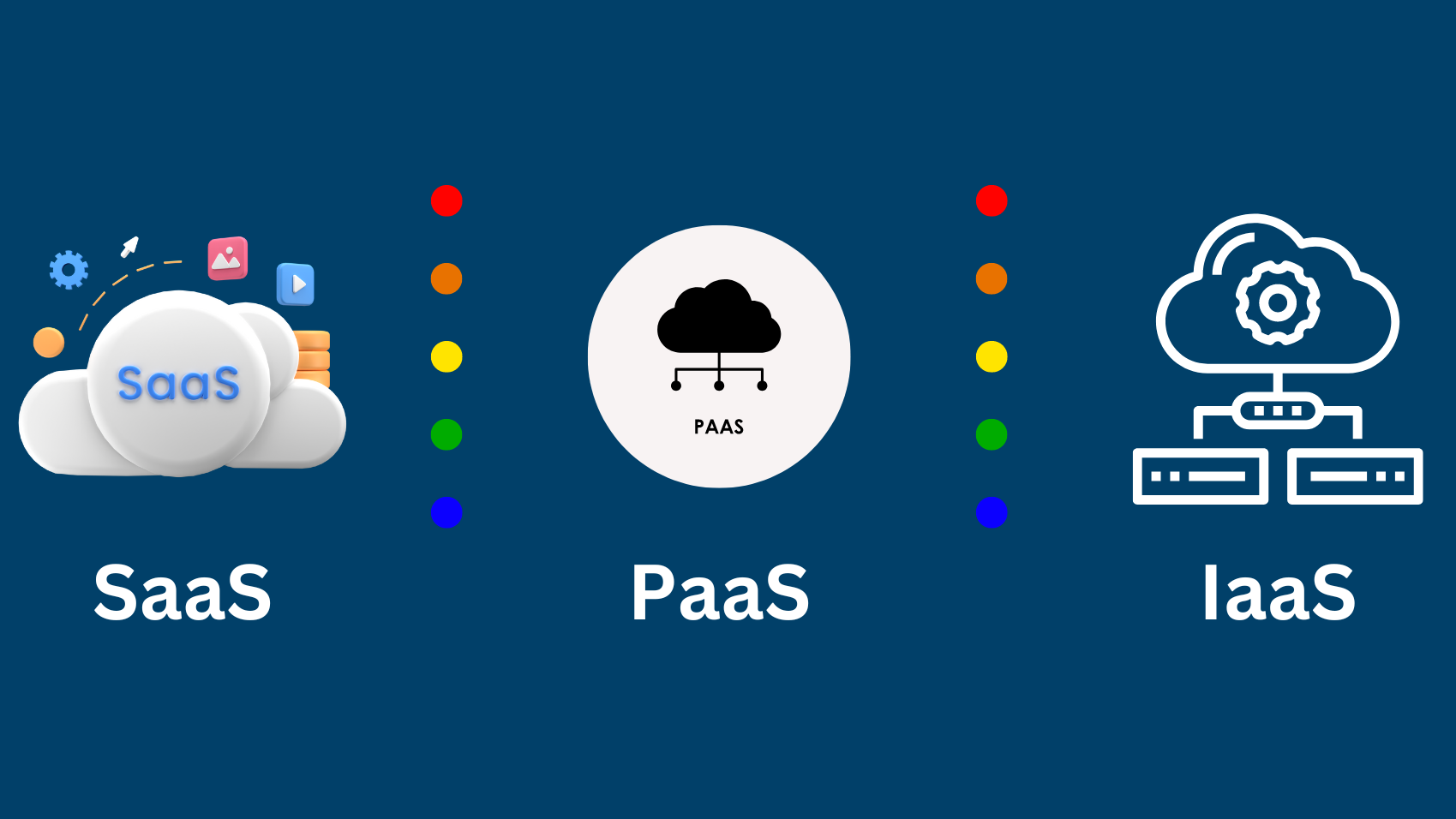The way businesses run has been completely transformed by cloud computing, which provides scalable, flexible, and affordable solutions for a variety of requirements. However, with options like Infrastructure as a Service (IaaS), Platform as a Service (PaaS), and Software as a Service (SaaS) available, selecting the best cloud service model can be difficult. Every model has distinct advantages and fits various use situations. We’ll examine each of these three primary cloud service models in this article, together with its features and advantages, to help you choose the one that best suits your company’s requirements.

Understanding the Cloud Service Models
1. Infrastructure as a Service (IaaS)
IaaS provides virtualized computing resources over the internet. It offers the fundamental building blocks of computing, including virtual machines, storage, and networking. IaaS allows businesses to rent these resources on-demand, offering a high level of control over the infrastructure.
Key Features:
- Virtual machines, storage, and networking capabilities.
- High flexibility and control over the operating system, applications, and configurations.
- Pay-as-you-go pricing model, which means you only pay for what you use.
Use Cases:
- Startups and small businesses: IaaS offers a cost-effective way to access robust infrastructure without significant upfront investments.
- Development and testing: It provides a scalable environment for testing new applications and services.
- Disaster recovery: IaaS can be used to set up disaster recovery solutions due to its scalability and cost-effectiveness.
Examples: Amazon Web Services (AWS) EC2, Microsoft Azure, Google Compute Engine.
2. Platform as a Service (PaaS)
PaaS provides a platform that allows developers to build, deploy, and manage applications without worrying about the underlying infrastructure. It includes a development environment, runtime, and tools, making it easier to develop and deploy applications quickly.
Key Features:
- Integrated development tools and pre-configured infrastructure.
- Supports multiple programming languages and frameworks.
- Managed database services and application hosting.
Use Cases:
- Application development: PaaS is ideal for developers who want to focus on writing code without managing infrastructure.
- Accelerated time-to-market: PaaS platforms streamline the development process, allowing for faster deployment of applications.
- Collaborative development: PaaS environments support team collaboration, making it easier for multiple developers to work on the same project.
Examples: Microsoft Azure App Service, Google App Engine, Heroku.
3. Software as a Service (SaaS)
SaaS delivers software applications over the internet, on a subscription basis. These applications are managed by the service provider, which handles all aspects of software maintenance, including updates and security.
Key Features:
- Accessible via a web browser, with no need for local installation.
- Managed by the service provider, including updates, security, and infrastructure.
- Subscription-based pricing model.
Use Cases:
- Business productivity: SaaS applications like email, CRM, and collaboration tools are essential for day-to-day business operations.
- Cost-effective access to software: SaaS eliminates the need for businesses to purchase, install, and maintain software locally.
- Scalability: SaaS applications can be scaled up or down based on the number of users, making it ideal for growing businesses.
Examples: Google Workspace, Microsoft 365, Salesforce, Zoom.
Choosing the Right Cloud Service Model
When deciding which cloud service model is right for your business, consider the following factors:
1. Control and Customization Needs:
- If your business requires complete control over the infrastructure and software stack, IaaS is the best choice. It provides maximum flexibility in configuring servers, storage, and networking resources.
- PaaS is suitable for businesses that want to focus on application development and deployment without managing the underlying infrastructure. It offers a balance between control and convenience.
- SaaS is ideal for businesses that need ready-to-use applications without the hassle of maintenance. It’s the most convenient option but offers the least control over the software environment.
2. Development and Deployment Speed:
- PaaS is designed to accelerate the development process by providing pre-configured environments and integrated tools, making it the best option for rapid development and deployment.
- SaaS applications can be quickly deployed to users, often within minutes, making it an excellent choice for immediate business needs.
3. Cost Considerations:
- IaaS typically has a pay-as-you-go pricing model, which can be cost-effective for startups and small businesses that need to manage costs closely.
- PaaS and SaaS usually have subscription-based pricing, which can be more predictable and easier to budget for, especially for businesses that want to avoid capital expenditures.
4. Use Case and Application Requirements:
- Consider the specific use case and requirements of your applications. For example, if you need a specific software environment for your development team, PaaS might be the right choice. If you need a CRM system or collaboration tools, SaaS would be more appropriate.
Conclusion
Whether it’s IaaS, PaaS, or SaaS, selecting the best cloud service model for your company will rely on its unique needs, financial constraints, and technological specifications. IaaS is best suited for companies with complicated infrastructure requirements since it provides the highest level of control and flexibility. PaaS offers an efficient development environment, ideal for developers that are primarily concerned with creating apps. SaaS provides ready-to-use software solutions, which are perfect for companies seeking little maintenance and convenience of use.
You can make an informed choice that supports your growth in the digital era and is in line with your business objectives by being aware of the characteristics and advantages of each model.
